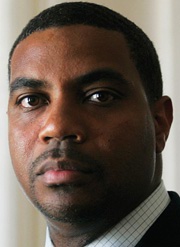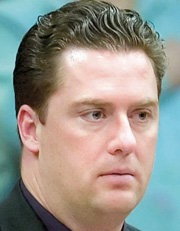Tuesday, June 30, 2009 | 2 a.m.
Sun Archives
Sun Coverage
Beyond the Sun
Recalculating the state’s formula for funding higher education will take some higher math, but one part of the equation is already in place.
Senate Majority Leader Steven Horsford and Assemblyman John Oceguera, the heir apparent to the Assembly speaker’s post for the next session, say it’s time.
Soon-to-be Chancellor Dan Klaich and outgoing Chancellor Jim Rogers agree, and several regents are on board.
Even Senate Minority Leader Bill Raggio, the Reno Republican who was an architect of the current formula, says it’s due for a look.
Raggio, like other northern leaders, isn’t saying he is convinced the southern schools are getting shortchanged by the current formula, just that “it’s probably a good time” for an “objective review.”
A study is nothing new; this is academia, after all. But in the past each side has come up with results that support its point of view.
“Everybody has studied it before,” former UNLV President Carol Harter says. “We’ve been talking about it for years and nothing has happened.”
Harter and Gerry Bomotti, UNLV’s vice president of finance and business, added one more study to the pile June 16, and it was sent out with Rogers’ weekly memo. It concluded that the southern institutions — UNLV and the College of Southern Nevada — lag the northern ones in funding and should receive a combined $22 million per biennium over three legislative sessions to make up the difference.
Rogers endorsed that view in the memo, writing: “When Southern Nevada businesses provide 75 percent of all the funds that Nevada’s higher education system receives, and when Southern Nevada has 65 percent of the higher education system’s students, it seems to me there is something fundamentally wrong when the Southern Nevada higher education institutions receive only approximately 50 percent of the total education budget.”
University of Nevada, Reno, faculty Senate Chairman Elliott Parker and UNR Associate Vice President for Planning, Budget and Analysis Bruce Shively shot back with another study. It concluded that the extra money for UNR was to take care of older buildings and administration of statewide programs, such as the Cooperative Extension.
When you look at the cost of instruction at UNR and UNLV, they wrote, the budgets are nearly identical.
Harter and Bomotti responded with another report of their own, disputing UNR’s contentions point-by-point.
It all highlights that higher education funding isn’t that simple no matter how you look at it, Regent Michael Wixom says.
“It’s a little misleading to compare dollar for dollar because of programs. You have to take a look at the underlying issues.”
One key issue that was ignored in 2001, the last time the Legislature examined and modified the funding formula, was UNLV’s transformation into a research institution, says Rep. Dina Titus, D-Nev., who, as state Senate minority leader, served on the committee that dealt with the matter.
“The formula does not take into account changing priorities or the cost of research,” Titus says. Although the formula does provide more money for doctoral programs, she says, it does not look at whether any students are in the programs.
The Harter-Bomotti response notes that 15.4 percent of UNLV’s students are in graduate programs, while at UNR the percentage is 14.1 percent, not including the medical, dental and law schools, which the reports excluded to keep the comparison apples to apples.
But beyond that, Bomotti says, the formula does not adequately support research for either institution. California, for example, provides $16,330 per student to the campuses of the University of California, which do research, and $8,708 to campuses of the California State University system, which are teaching colleges. UNLV gets $8,361 per student in state funding.
Wixom says the debate has made at least one problem with the formula very clear to him. “We’re using one formula to fund different types of institutions — research institutions and community colleges. That’s taking a broad brush across all institutions.”
The root problem, Rogers maintains, is that higher education is not getting enough funding overall. The aim of the memo, he says, was not to suggest taking money from UNR to give to UNLV but to increase funding for all and give UNLV an extra boost.
After a legislative session in which higher education faced 36 percent cut, chances of that might seem laughable.
But Horsford says the tight budget highlighted the differences between the schools and gave legislators a desire to look more closely at the formula.
“My goal is to find ways to enhance the whole system and address the inequities over time based on a strategic plan, so that we get it right,” he says.
A bill to fund such a study did not make it through the final hours of the 2009 session, but Oceguera says he is committed to finding a way to fund it through the Legislative Commission, which he chairs, and the Interim Finance Committee, on which he sits.
The incoming chancellor says he, too, is committed to a thorough study, and it should be done in partnership with the Legislature. But if the Legislature cannot find a way, the system of higher education will get the study done on its own, Klaich says.
“It is incumbent on the system to take a leadership role,” he says. “For the formula to be credible, it has to be equitable.”



Join the Discussion:
Check this out for a full explanation of our conversion to the LiveFyre commenting system and instructions on how to sign up for an account.
Full comments policy